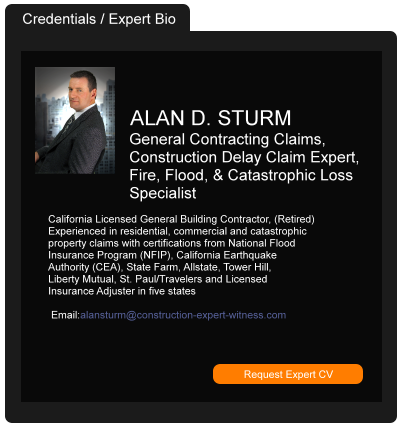Pillsbury Insights – Navigating the Real Estate Market During COVID-19
July 06, 2020 —
Caroline A. Harcourt - Gravel2Gavel Construction & Real Estate BlogUntil COVID-19 officially took hold in the U.S. in March of 2020, the U.S. real estate market was active, even robust. Starting in March, however, the possible scope of the pandemic and the sudden imposition of stay-at-home orders resulted in deal volume falling precipitously—with sales, leasing and lending transactions being put on temporary “wait and see” pause or terminated altogether.
The impact of COVID-19 on the real estate market has not been felt evenly. Hotels have been hit extremely hard, with many hotels shuttered altogether and many others only open at staggeringly low occupancy rates. Retail likewise has been virtually shut down in various parts of the country—with retailers across the country asking for rental forbearance or lease surrenders and others, such as J Crew, Neiman Marcus and Pier 1, pursuing bankruptcy reorganizations or liquidation. Multifamily has also been relatively hard hit, and landlords are having to navigate a web of local, state, and even federal regulations regarding tenant protections, such as non-eviction orders. The least affected sector so far has been office—however employers and office space users who are becoming facile with zoom and “working at home” may well re-examine their usage of office space—and it is within the realm of possibility to imagine that even this sector may come under pressure over time.
Read the court decisionRead the full story...Reprinted courtesy of
Caroline A. Harcourt, PillsburyMs. Harcourt may be contacted at
caroline.harcourt@pillsburylaw.com
If You Don’t Like the PPP Now, Wait a Few Minutes…Major Changes to PPP Loan Program as Congress Passes Payroll Protection Program Flexibility Act
July 27, 2020 —
Ryan J. Udell & Adam J. Chelminiak - White and Williams LLPOn June 5, 2020, President Trump signed into law the Payroll Protection Program Flexibility Act of 2020 (the Flexibility Act). The Flexibility Act provides much-needed flexibility for the Paycheck Protection Program (PPP) and its millions of business participants.
The PPP offers loans to small businesses that have been adversely impacted by the COVID-19 pandemic and the measures taken by various governmental authorities to stem the spread of the virus so that they could keep their employees on the payroll during an eight-week period after receiving the funds. The PPP was particularly alluring to borrowers because the loans could be forgiven. But as the duration of lockdown orders and the accompanying economic aftershocks have extended longer than initially anticipated, particularly in those sectors that depend on in-person business such as restaurants, hospitality and other “main street” retail establishments, many recipients of PPP loans have found it challenging to use the PPP funds for payroll and other authorized purposes within the eight-week period after they had received the PPP funds, as is necessary to preserve eligibility for forgiveness. The Flexibility Act makes several key changes to the PPP program in order to allow borrowers who need a longer re-opening runway to do so without jeopardizing their ability to qualify for loan forgiveness.
This alert outlines the key changes to the PPP made by the Flexibility Act.
Reprinted courtesy of
Ryan J. Udell, White and Williams LLP and
Adam J. Chelminiak, White and Williams LLP
Mr. Udell may be contacted at udellr@whiteandwilliams.com
Mr. Chelminiak may be contacted at chelminiaka@whiteandwilliams.com;
Read the court decisionRead the full story...Reprinted courtesy of
The Right to Repair Act Isn’t Out for the Count, Yet. Homebuilders Fight Back
October 02, 2015 —
Garret Murai – California Construction Law Blog“[I]t ain’t how hard you hit; it’s about how hard you can get hit, and keep moving forward. How much you can take, and keep moving forward. That’s how winning is done. . . .” – Sylvester Stalone as Rocky Balboa in Rocky Balboa.
Ding, ding.
The Little Case That Roared
Two years ago we wrote about a case that caused an uproar in the homebuilding industry – Liberty Mutual Insurance Company v. Brookfield Crystal Cove LLC, 219 Cal.App.4th 98 (2013) – in which the California Court of Appeals for the Fourth District held for the first time that the Right to Repair Act does not provide the exclusive remedy for construction defect claims involving “actual,” as opposed to “economic,” damages in new residential housing.
It was a blow to the homebuilding industry who back in 2002, following a wave of construction defect lawsuits involving new residential housing, lobbied the State Legislature for the Right to Repair Act which gave homebuilders an opportunity to repair defects before being sued in court.
Read the court decisionRead the full story...Reprinted courtesy of
Garret Murai, Wendel Rosen Black & Dean LLPMr. Murai may be contacted at
gmurai@wendel.com
Avoiding Project Planning Disasters: How to Spot Problem Projects
December 13, 2021 —
James T. Dixon - Construction ExecutiveThe burden of project planning falls first and foremost upon a project owner. Owners have varying levels of sophistication, and the smart ones fill weak spots on their staff by engaging project managers, construction managers and owner’s representatives.
Typically, the owner then delegates the largest part of the project’s plan to the contractor in terms of creation and execution of a critical path method schedule during the construction phase. Before accepting that burden, a wise contractor will evaluate the project to determine if it is on a path to success or disaster. It is guaranteed that an owner’s problems will become the contractor’s problems in one way or another.
There are legendary projects that were also legendary planning failures. The iconic Sydney Opera House is one. The design competition began in 1955. After selecting the architect, the owner implemented a team that involved that architect, a structural engineer and an executive committee of inexperienced politicians. The original plan included a budget of $7 million (Australian) and a completion schedule spread over four years. That executive committee forced the project to start before designs were complete, doubled the number of theaters and then put a strangle-hold on the payment process, eventually causing the architect to quit and return to Europe with the construction drawings. The Opera House opened for its first performance in 1973—14 years late and $98 million over budget.
Reprinted courtesy of
James T. Dixon, Construction Executive, a publication of Associated Builders and Contractors. All rights reserved.
Read the court decisionRead the full story...Reprinted courtesy of
Insurer Must Defend Additional Insured Though Its Insured is a Non-Party
November 18, 2019 —
Tred R. Eyerly - Insurance Law HawaiiThe plaintiff insurer's motion for partial summary judgment seeking an order that defendant insurer was obligated to defend a non-party as an additional insured was granted. Am Empire Surplus Lines Ins. Co. v. Burlington Ins. Co., 2019 N. Y. Misc. LEXIS 4145 (N. Y. Sup. Ct. July 25, 2019).
Quality Building Construction, LLC was the contractor hired to work on exterior facade of a building owned by Central Park West Corporation. The underlying complaint alleged that Quality caused plastic spacers and pedestals used for the penthouse terrace to fall down the roof drain riser. A clog and rainwater backup resulted in water damage to apartment 8A. The resulting damage was allegedly due to the clogged roof drain riser.
Quality subcontracted the work to Mega State, Inc. The subcontract required Mega to indemnify and hold Quality harmless against claims in connection with Mega's work, as well as name Quality as an additional insured on a primary, non-contributory bases under Mega's CGL policy. Burlington issued a policy to Mega naming Quality as an additional insured. American Empire issued a CGL policy to Quality.
Quality was sued in the underlying action, but Mega was not. American Empire tendered a demand for coverage to Mega and Burlington, relying on the agreement between Quality and Mega. Burlington responded that Mega was not liable for the alleged damages. American Empire sued Burlington. Subsequently, Burlington accepted the tender to defend Quality in the underlying action, and reserved rights as to whether Burlington's policy was primary and on the question of indemnification. American Empire agreed to withdraw its suit if Burlington would modify its reservation of rights. Burlington refused.
Read the court decisionRead the full story...Reprinted courtesy of
Tred R. Eyerly, Damon Key Leong Kupchak HastertMr. Eyerly may be contacted at
te@hawaiilawyer.com
Wilke Fleury Attorneys Featured in 2021 Best Lawyers in America and Best Lawyers: Ones To Watch!
September 28, 2020 —
Wilke Fleury LLPWilke Fleury congratulates attorneys
David Frenznick,
Adriana Cervantes and
Dan Egan on their inclusion in the 2021 Edition of Best Lawyers in America!
Since it was first published in 1983, Best Lawyers® has become universally regarded as the definitive guide to legal excellence. Best Lawyers lists are compiled based on an exhaustive peer-review evaluation. Almost 108,000 industry leading lawyers are eligible to vote (from around the world), and they have received over 13 million evaluations on the legal abilities of other lawyers based on their specific practice areas around the world. For the 2021 Edition of The Best Lawyers in America©, 9.4 million votes were analyzed.
Read the court decisionRead the full story...Reprinted courtesy of
Wilke Fleury
Walking the Tightrope of SB 35
December 22, 2019 —
Robert Howard, Alexander Walker and Matt Olhausen - Gravel2Gavel Construction & Real Estate Law BlogDevelopers in California know that getting approval to build new housing projects can be extremely difficult, time-consuming, and expensive. But a new policy is finally coming into full effect which could help developers cut through those barriers. SB 35, enacted in 2017, streamlines the approval process for housing developments in areas with inadequate housing supply, so long as the developments meet certain criteria.
We have written elsewhere about the initial impacts of SB 35. SB 35 has successfully allowed some developers to obtain their entitlements quickly and easily through a streamlined process, but some local governments have resisted the use of SB 35. For example, the City of Los Altos denied an application that attempted to obtain streamlining through SB 35, prompting a nonprofit housing organization to sue. In Cupertino, the Planning Commission Chairman advocated in April 2019 for rescinding the SB 35 approval of the redevelopment of the Vallco Mall, which would include over 2,400 units of housing, while some residents have sued to block the development. As a result, it is crucial for developers to understand the details of SB 35 and make sure to meet all of its requirements. Any misstep may allow a recalcitrant local government to deny that a development project qualifies for SB 35 treatment and attempt to block it.
In November 2018, the state Department of Housing and Community Development (HCD) released Guidelines to clarify the criteria for SB 35 and assist cities in determining whether projects qualify for streamlining.
Reprinted courtesy of Pillsbury attorneys
Robert Howard,
Alexander Walker and
Matt Olhausen
Mr. Howard may be contacted at robert.howard@pillsburylaw.com
Mr. Walker may be contacted at alexander.walker@pillsburylaw.com
Mr. Olhausen may be contacted at matt.olhausen@pillsburylaw.com
Read the court decisionRead the full story...Reprinted courtesy of
Congratulations to BWB&O’s 2024 Southern California Super Lawyers!
February 05, 2024 —
Dolores Montoya - Bremer Whyte Brown & O'Meara LLPBWB&O is excited to announce that Partners Nicole Whyte, Keith Bremer, John Toohey, and Tyler Offenhauser have been selected in the 2024 Southern California Super Lawyers list as Super Lawyers for their work in Business Litigation, Family Litigation, Personal Injury Litigation, and Construction Litigation. To read Super Lawyers’ digital publication, please
click here.
Super Lawyers is a rating service of outstanding lawyers from more than 70 practice areas who have attained a high degree of peer recognition and professional achievement. The objective of Super Lawyers’ patented multiphase selection process is to create a credible, comprehensive, and diverse listing of outstanding attorneys that can be used as a resource for attorneys and consumers searching for legal counsel. Please join us in congratulating Nicole, Keith, John, and Tyler on achieving this level of recognition!
Read the court decisionRead the full story...Reprinted courtesy of
Dolores Montoya, Bremer Whyte Brown & O'Meara LLP


































































